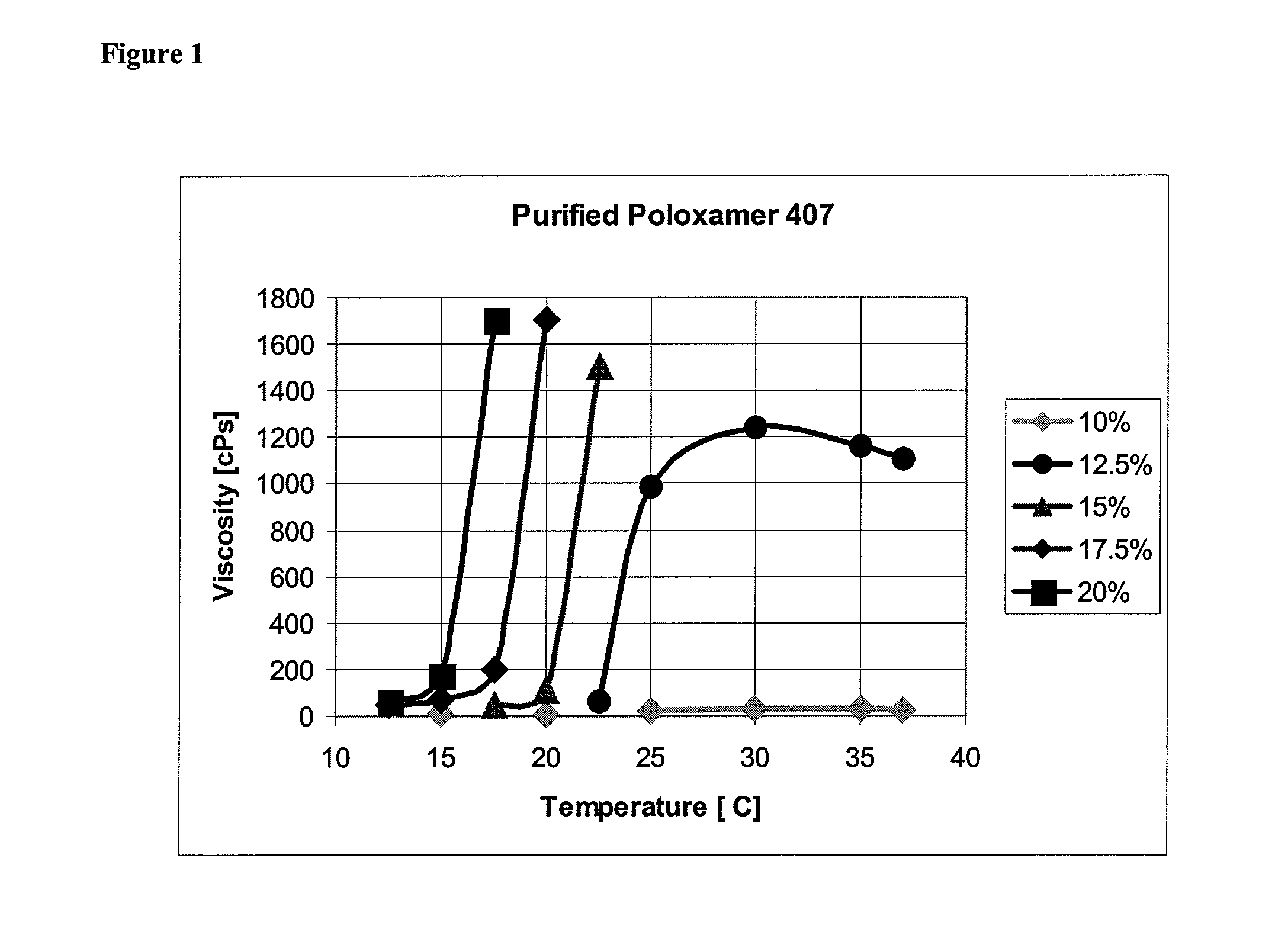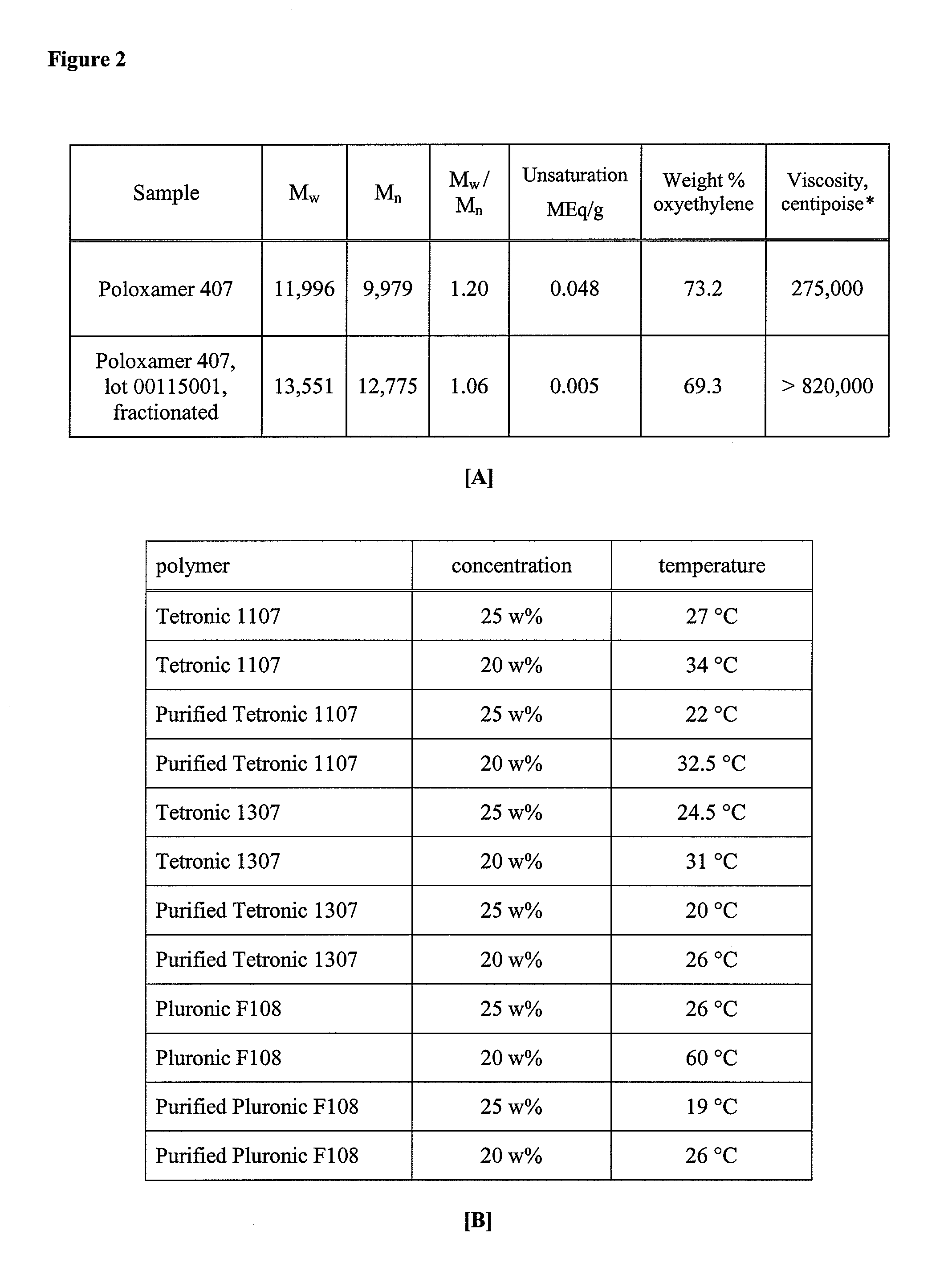Atraumatic Occlusion Balloons and Skirts, and Methods of Use Thereof
a technology of which is applied in the field of atraumatic occlusion balloons and skirts, can solve the problems of thickening and narrowing of the artery, and achieve the effect of reducing the need for pressure and better conforming to the target lumen
- Summary
- Abstract
- Description
- Claims
- Application Information
AI Technical Summary
Benefits of technology
Problems solved by technology
Method used
Image
Examples
example 1
Purification of Poloxamer 407
[0150]Poloxamer 407 (486.0 g, lot number WPHT-543B), purchased from BASF Corporation, Mount Olive, N.J., was dissolved in deionized water (15,733 g). The solution was maintained at 0.1° C. and 2335.1 g of (NH4)2SO4 were added. The solution was equilibrated at 2° C. and after two distinct phases formed, the lower phase was discarded, and the upper phase (2060 g) was collected and weighed. Deionized water (14159 g) was added and the solution was equilibrated to 2° C. Next, 2171.6 g of (NH4)2SO4 were added with stirring. After the salt was dissolved, the solution was maintained at approximately 2° C. until two phases formed. The upper phase (3340 g) was isolated and diluted with 12879 g of deionized water. The solution was chilled to about 2.2° C. and 2062 g of (NH4)2SO4 were added. The phases were allowed to separate as above. The upper phase was isolated and extracted with 4 liters of dichloromethane. Two phases were allowed to form overnight. The organic...
example 2
Gelation Temperature of Selected Reverse Phase Media
[0151]The optionally-purified polymer was weighed into a plastic tube. To achieve the required concentration the weight was multiplied by 4, for 25 weight percent (w %), and by 5, for 20 weight percent (w %), and the required final weight was achieved by adding saline. The solutions were placed in the fridge at 4° C. and usually were ready within 24 hours. Gelation points were measured in a Brookfield viscometer and the point at which viscosity exceeded the range of the plate / cone (greater than about 102,000 cP) was called the gelation temperature. Results are shown in FIG. 2[B].
PUM
 Login to View More
Login to View More Abstract
Description
Claims
Application Information
 Login to View More
Login to View More - R&D
- Intellectual Property
- Life Sciences
- Materials
- Tech Scout
- Unparalleled Data Quality
- Higher Quality Content
- 60% Fewer Hallucinations
Browse by: Latest US Patents, China's latest patents, Technical Efficacy Thesaurus, Application Domain, Technology Topic, Popular Technical Reports.
© 2025 PatSnap. All rights reserved.Legal|Privacy policy|Modern Slavery Act Transparency Statement|Sitemap|About US| Contact US: help@patsnap.com



